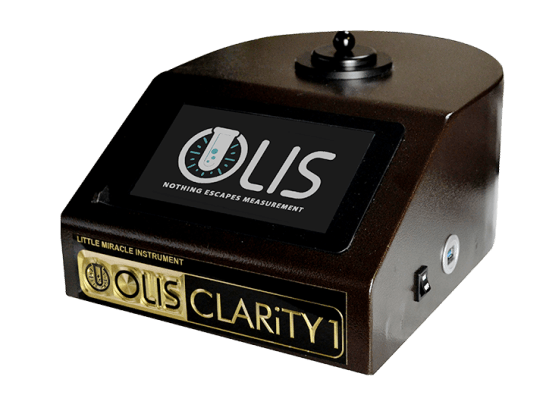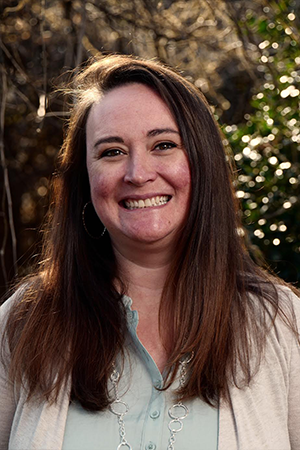Circular Dichroism - Questions
The 4-Minute Rule for Circular Dichroism
Table of ContentsMore About Uv/vis/nirEverything about Uv/vis/nirThe Of SpectrophotometersAn Unbiased View of Circular DichroismCircular Dichroism Things To Know Before You BuyTop Guidelines Of Circularly Polarized LuminescenceThe 15-Second Trick For Uv/visSee This Report about Circular DichroismThe Facts About Uv/vis RevealedSpectrophotometers - An OverviewUv/vis for BeginnersOur Uv/vis DiariesThings about Circular Dichroism
It is then scanned through the sample and the recommendation services. Fractions of the incident wavelengths are sent through, or reflected from, the sample and the recommendation. The resultant light strikes the photodetector device, which compares the relative strength of the two beams. Electronic circuits convert the relative currents into direct transmission portions and/or absorbance/concentration values.The transmission of a referral compound is set as a baseline (datum) worth, so the transmission of all other compounds are recorded relative to the preliminary "zeroed" compound. The spectrophotometer then transforms the transmission ratio into 'absorbency', the concentration of particular elements of the test sample relative to the initial compound.
Since samples in these applications are not readily offered in big quantities, they are especially fit to being evaluated in this non-destructive strategy. In addition, precious sample can be conserved by using a micro-volume platform where as low as 1u, L of sample is needed for total analyses. A brief description of the treatment of spectrophotometry consists of comparing the absorbency of a blank sample that does not consist of a colored substance to a sample that contains a colored substance.
The Single Strategy To Use For Uv/vis
In biochemical experiments, a chemical and/or physical residential or commercial property is chosen and the treatment that is used is particular to that residential or commercial property in order to derive more details about the sample, such as the quantity, pureness, enzyme activity, etc. Spectrophotometry can be utilized for a number of methods such as identifying optimum wavelength absorbance of samples, identifying optimum p, H for absorbance of samples, identifying concentrations of unidentified samples, and identifying the p, Ka of various samples.: 21119 Spectrophotometry is likewise a useful procedure for protein purification and can also be utilized as an approach to create optical assays of a compound.
It is possible to understand the concentrations of a two element mix utilizing the absorption spectra of the basic services of each element. To do this, it is essential to know the termination coefficient of this mixture at 2 wave lengths and the termination coefficients of solutions which contain the recognized weights of the two parts.

Not known Facts About Circular Dichroism
Area. The concentration of a protein can be estimated by measuring the OD at 280 nm due to the presence of tryptophan, tyrosine and phenylalanine.
This technique requires a spectrophotometer capable of determining in the UV area with quartz cuvettes.: 135 Ultraviolet-visible (UV-vis) spectroscopy includes energy levels that thrill electronic transitions. Absorption of UV-vis light delights molecules that are in ground-states to their excited-states.
20. 8 O.D. Ink producers, printing companies, textiles suppliers, and much more, need the data supplied through colorimetry. They take readings in the region of every 520 nanometers along the noticeable region, and produce a spectral reflectance curve or an information stream for alternative discussions. These curves can be utilized to test a brand-new batch of colorant to inspect if it makes a match to specifications, e.
The Buzz on Uv/vis
Standard noticeable area spectrophotometers can not find if a colorant or the base product has fluorescence. This can make it challenging to manage color problems if for example several of the printing inks is fluorescent. Where a colorant consists of fluorescence, a bi-spectral fluorescent spectrophotometer is used (https://pblc.me/pub/3fc0b3e264b77b). There are two significant setups for visual spectrum spectrophotometers, d/8 (round) and 0/45.
Scientists use this instrument to measure the quantity of substances in a sample. If the substance is more focused more light will be absorbed by the sample; within small ranges, the Beer, Lambert law holds and the absorbance in between samples differ with concentration linearly. When it comes to printing measurements 2 alternative settings are frequently used- without/with uv filter to control better the effect of uv brighteners within the paper stock.
What Does Circular Dichroism Mean?
Some applications require small volume measurements which can be performed with micro-volume platforms. As described in the applications area, spectrophotometry can be used in both qualitative and quantitative analysis of DNA, RNA, and proteins. Qualitative analysis can be utilized and spectrophotometers are used to tape-record spectra of substances by scanning broad wavelength areas to determine the absorbance properties (the intensity of the color) of the compound at each wavelength.

Getting The Spectrophotometers To Work
One significant aspect is the kind of photosensors that are offered for various spectral areas, however infrared measurement is also challenging because essentially whatever gives off IR as thermal radiation, specifically at wavelengths beyond about 5 m. Another issue is that numerous materials such as glass and plastic take in infrared, making it incompatible as an optical medium.
Samples for IR spectrophotometry might be smeared between two discs of potassium bromide or ground with potassium bromide and pressed into a pellet. Where aqueous services are to be measured, insoluble silver chloride is used to construct the cell. Spectroradiometers, which operate almost like the visible region spectrophotometers, are designed to measure the spectral density of illuminants. Retrieved Dec 23, 2018. Fundamental Laboratory Approaches for Biochemistry and Biotechnology (Second ed.). The necessary guide to analytical chemistry.
Oke, J. B.; Gunn, J. E.
How Uv/vis can Save You Time, Stress, and Money.

1021/ac50048a728. ISSN0003-2700. Ninfa AJ, Ballou DP, Benore M (2015 ). Fundamental Laboratory Methods for Biochemistry and Biotechnology (3, rev. ed.). Hoboken, NJ: Wiley & Sons. p. 77. ISBN9780470924525. OCLC915641828. "Totally Automatic Double Beam - Atomic Absorption Spectrophotometer (AA 8000)". Lab Devices. Labindia Analytical Instruments Pvt. Ltd. "Spectrophotometry Applications and Fundamentals".
Little Known Questions About Spectrophotometers.
Retrieved Jul 4, 2018. Trumbo, Toni A.; Schultz, Emeric; Borland, Michael G.; Pugh, Michael Eugene (April 27, 2013). "Applied Spectrophotometry: Analysis of a Biochemical Mixture". Biochemistry and Molecular Biology Education. 41 (4 ): 24250. doi:10. 1002/bmb. 20694. PMID 23625877. (PDF). www. mt.com. Mettler-Toledo AG, Analytical. 2016. Recovered Dec 23, 2018. Cortez, C.; Szepaniuk, A.; Gomes da Silva, L.
"Checking Out Proteins Filtration Strategies Animations as Tools for the Biochemistry Teaching". Journal of Biochemistry Education. 8 (2 ): 12. doi:. Garrett RH, Grisham CM (2013 ). Biochemistry. Belmont, CA: Cengage. p. 106. ISBN 978-1133106296. OCLC 801650341. Holiday, Ensor Roslyn (May 27, 1936). "Spectrophotometry of proteins". Biochemical Journal. 30 (10 ): 17951803. doi:10. 1042/bj0301795.
PMID 16746224. Hermannsson, Ptur G.; Vannahme, Christoph; Smith, Cameron L. C.; Srensen, Kristian T.; Kristensen, Anders (2015 ). "Refractive index dispersion sensing using a variety of photonic crystal resonant reflectors". Applied Physics Letters. 107 (6 ): 061101. Bibcode:2015 Ap, Ph, L. 107f1101H. doi:10. 1063/1. 4928548. S2CID 62897708. Mavrodineanu R, Schultz JI, Menis O, eds.
Uv/vis/nir - Truths
U.S. Department of Commerce National Bureau of Standards unique publication; 378. Washington, D.C.: U.S. National Bureau of Standards.
The procedure begins with a controlled light source that illuminates the examined sample. In the case of reflection, as this light communicates with the sample, some is absorbed or discharged. The emitted light travels to the detector, which is examined, quantified, and presented as industry-standard color scales and indices.
Industry governing bodies typically specify particular metrics for particular items, such as Tomato and Coffee indices. The simplified math looks like this: Where R is the reflection coefficient. All terms are evaluated over the visible spectrum from 400 to 700 nm. In the case of transmission, when the light communicates with the sample, it is either absorbed, shown, or sent.
See This Report about Uv/vis/nir
Examples include APHA (American Public Health Association) for watercolor and pureness analysis, ASTM D1500 for petrochemical color analysis, edible oil indices utilized in food, and color analyses of drinks. The streamlined mathematics looks like this:. Where T is the transmission coefficient. All terms are assessed over the noticeable spectrum from 400 to 700 nm.
Image Credit: Matej Kastelic/ Dr. Arnold J. Beckman and his associates at the National Technologies Laboratories first created the spectrophotometer in 1940. In 1935 Beckman founded the company, and the discovery of the spectrophotometer was their most ground-breaking innovation. Dr. Bruce Merrifield, a Nobel prize-winning biochemist, stated that the innovation of the spectrophotometer was "most likely the most crucial instrument ever established towards the improvement of bioscience." Before the discovery of the spectrophotometer, chemical analyses took weeks to complete, with 25% accuracy.
8 Easy Facts About Circular Dichroism Described
99% precision. Over time, researchers kept enhancing the spectrophotometer design to boost its efficiency. For circumstances, the UV capabilities of the design B spectrophotometer were improved by replacing the glass prism with a quartz prism. Ultimately, the Design DU was created, consisting of a hydrogen light and other enhancements. This instrument was utilized in industrial labs, centers, and chemistry and biochemistry departments.
After 1984, double-beam versions of the device were designed. The addition of external software application with the arrangement of onscreen display screens of the spectra was available in the 1990s. Typically, a spectrophotometer is comprised of two instruments, namely, a spectrometer and a photometer. A standard spectrophotometer includes a light source, a monochromator, a collimator for straight beam transmission, a cuvette to place a sample, and a photoelectric detector.
Circular Dichroism for Dummies
There are various kinds of spectrophotometers in numerous shapes and sizes, each with its own purpose or performance. A spectrophotometer determines just how much light is shown by chemical elements. spectrophotometers. It determines the difference Source in light strength based upon the total quantity of light presented to a sample and the amount of beam that travels through the sample solution
Based on the instrument's style, the sample is placed in between the spectrometer and the photometer. After the light is travelled through the sample, the photometer measures its intensity and shows the reading. A spectrophotometer is used to identify the concentration of both colorless and colored solutes in an option. This instrument is used to identify the rate of a response.